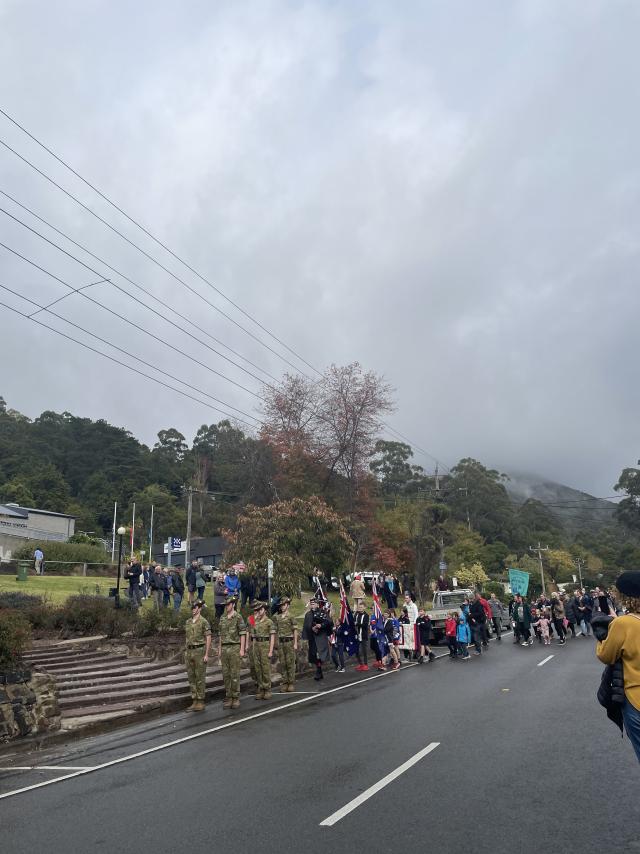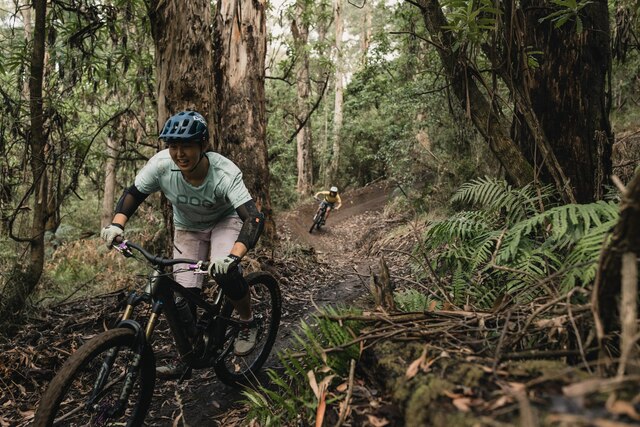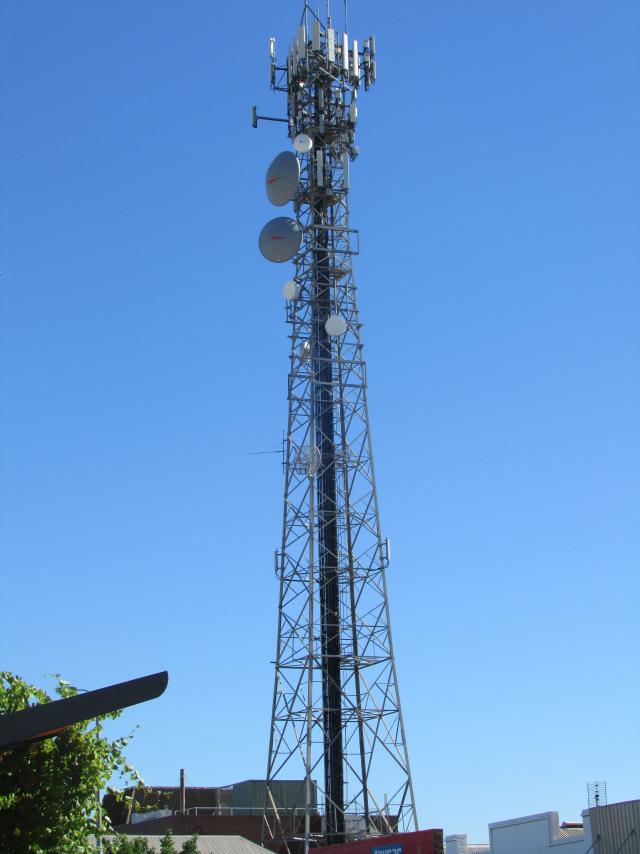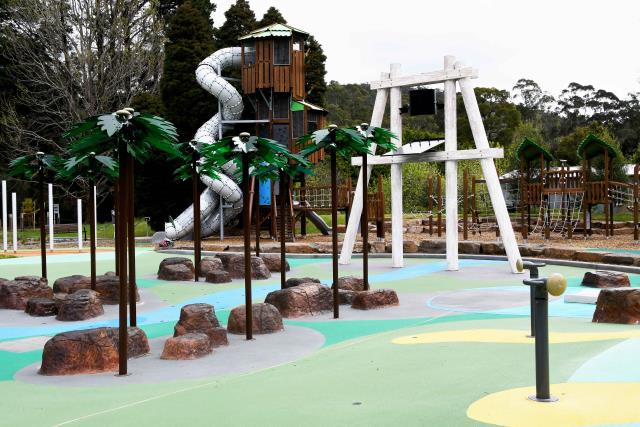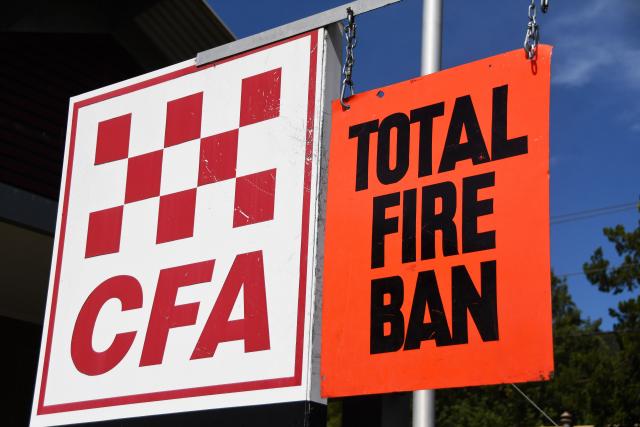Warburton residents gathered in the street on Thursday 25 April at 10.30am, ready for the annual march through the township.
The parade formed at the Warburton RSL Sub-Branch and marched up the highway ready for the service at the Warburton Cenotaph at 10.50am.
Guest Speaker Trevor Hince spoke at the service and told the story and service of his father, Corporal Hugh Hince, who served in WW2 with the 1st Australian War Graves Maintenance Unit, tending to the dead in New Guinea.
“My story is that of a solder who saw more of the death and carnage than many men did, though his rifle was never fired, he received a mention from the King and two oak wings for his distinguished service,” he said.
“At age 25, with two sons, one 18 months and another three weeks old, he joined the CMF (Combined Maritime Forces) for training and then signed up with the AIF (Australian Imperial Force) to be more proactive with the threat that was developing in New Guinea.”
According to an article on the RSL Victoria website written in October 2023, Corporal Hince ‘walked the Kokoda Track nine times’ during his service, having been initially tasked with searching for and retrieving the bodies of dead soldiers on the frontline, burying them in makeshift cemeteries along the track and maintaining those grounds.
Mr Hince said his father’s need to wear spectacles is why he was exempted from one of the many deporting roles in the infantry before he was assigned to the war graves unit.
“After he died in 1996, among his effects, my brother Kevin and I came across an old ration tin that contained his medals, a few bits and pieces and two tiny diaries written in extremely small handwriting,” he said.
“From these, we learned that Corporal Hugh Hince followed the AIF who were pushing the Japenese back up the Kokoda track, and learnt how the war graves unit hastily buried the fallen soldiers along the track and established a number of cemeteries, with the remains of both Australian and Japanese soldiers given a respectful burial,”
“One of his earlier recoveries included the body of Private Bruce Kingsbury who was awarded the Victoria Cross for his extraordinary courage.”
Later in the war, Corporal Hince was stationed at the Bomana War Cemetery, 19km kilometres from Port Moresby where he was initially sent to, with the cemetery becoming a final, ‘dignified’ resting place for many of the soldiers after Corporal Hince and the war graves unit exhumed and repatriated the already-buried bodies along the Kokoda track and brought them back to Bomana.
Mr Hince said his father’s job regularly took him deep into the jungle.
“We learned how he searched for and found remains and identification of thousands of decomposed remains, sometimes with just the serial number on the belt to go on as Aussie boots were prized by the Japanese making identification more difficult,” he said.

